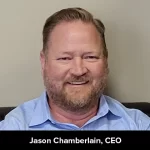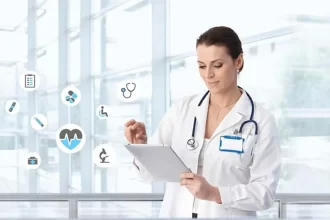Sweeping solutions are the latest trend as they make sense at a broader level and appeal to a larger audience.
But highly effective modern medicine narrows the focus down to the individual level: the patient, the provider, the treatment, the system, and the solution.
In charge capture, broader is definitely not better when it comes to peer rankings, revenue generation, and time efficiency.
Most doctors don’t realize how far behind they are falling.
They would benefit from a what is charge capture guide to get pointed in the right direction.
At the foundation level, doctors using paper can’t afford to stay there. A resounding 27-40% of doctors still use paper for claim processing and billing despite a 4-8% loss directly attributable to erroneous or missing charges from the shuffle of paperwork through multiple hands.
Another 6-7% use raw excel sheets, google docs, word docs, or note pad files to chart and bill before then having to copy, paste, or double enter that infor into their other systems.
“There’s simply just no need for all this extra work and headache,” says Balazs Kocsi, Chief Product Officer at Claimocity. “Mobile charge capture is just billing on the go and should be the simplest and easiest part of the rounding process.”
In the last 10 years the physician–based mobile charge capture software sphere has undergone a massive transformation. Physical files shifted to a large personal computer (PC) which downsized to a personal digital assistant (PDA) and now sits at the mobile application level with some combination of mobile, tablet, and laptop devices available depending on your preference.
The best way to increase efficiency is to simplify the solution
At every shift in technology, there has been an improvement in efficiency, portability, computing power, speed, convenience, and integration.
Yet all of these categories are simply better than their predecessor, not maximized.
Not to mention they never work well together.
And even the companies that get the charge capture app as close to right as they can get it suffer from the unavoidable problems that come from needing more than one application to run a practice.
Each software has to be stitched into another, and the average provider requires 3-4 separate solutions to cover charting, billing, practice management, coding visits, checking the daily census, tracking financials, following AR, benchmarking, accessing reports, submitting SOAP notes, telemedicine, messaging, checking patient files, reviewing histories and demographics, and so on.
The time and revenue losses that comes from stringing these completely independent software solutions together more than rivals clinging to paper solutions in an Al–enhanced electronic world.
And not all medical specialties have the same needs. There’s no one-size fits all solution without a lot of compromise and jamming square pegs into round holes.
The need for change is apparent and the latest trend shifts the solution from the singular software solution to an end–to–end platform.
Just like an app, it is cross–device designed so it can be used on iPads, laptops, desktop computers, or mobile devices like your iPhone. But unlike a single app, it is like an all–inclusive resort that covers everything you need.
The current trendsetter is Claimocity, which offers a platform exclusively for inpatient doctors. Rather than a single charge capture solution, their software platform gives rounding doctors a one stop shop for everything they need from practice management to charge. capture, billing, coding, reporting, financials, charting, EHR, SOAP notes, census management, facility connections, and credentialing.
“The best way to increase efficiency is to simplify the solution and remove the barriers a doctor’s data gets lost in. Four separate software and service solutions all trying to work together is never going to work as well as one well–designed end–to–end platform that provides a better user experience and a higher level of data intelligence.”
Everything is right at your fingertips wherever you are and whenever you need it and the efficiency improvements are through the roof. Doctors are billing and charting in a third of the time while having the flexibility to do it on the go at the point of care or on a laptop later in the week.
But Claimocity didn’t stop there. They offer a concierge billing team option to automate the billing process, so doctors now can just round, see patients, have their phone on them, enter the progress notes using the improved process, and all the billing will be handled for them and presented for them to review or just click submit.
Down coding and up coding are eliminated with up to date 2023 CPT coding guideline with appropriate 99418 code usage since it was done by a personal professional billing team tracking the rounds remotely. The revenue per encounter is maximized. Denial risks go down significantly. Audit risks are virtually eliminated and the doctor gets to focus on the patient and the quality of care while saving boatloads of time and getting paid more.
Mobile charge capture is just billing on the go, and should be the simplest part of the rounding process.
What’s the drawback?
The primary drawback is that both of these solutions are limited to hospital and facility-based physician practices. Traditional medical offices have to use standard software solutions.
Since the platform is designed for inpatient specialties, it does not offer some of what office–based practices need, such as front desk software for receptionists and Mas, appointment scheduling software, and specialist referral modules since these are functions already provided by the hospital or facility these doctors see patients in.
Instead, they get all the items they need to round more efficiently and collect more of what they are owed.
Not only does the platform cover all the software needs, but all the billing service needs as well. Everything under one roof from point of care to claim reimbursement.
This means greater insights into revenue growth opportunities as the claim can be tracked from start to finish with full transparency and patterns can be evaluated for improvements, issues identified and corrected, and financial reporting can be much more comprehensive.
It’s truly an all-in-one platform option for rounding physician practices.










